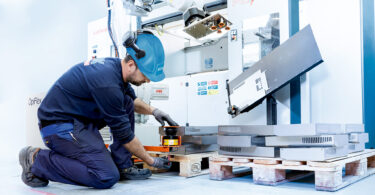Significant Features to Consider When Selecting a Safety Laser Scanner
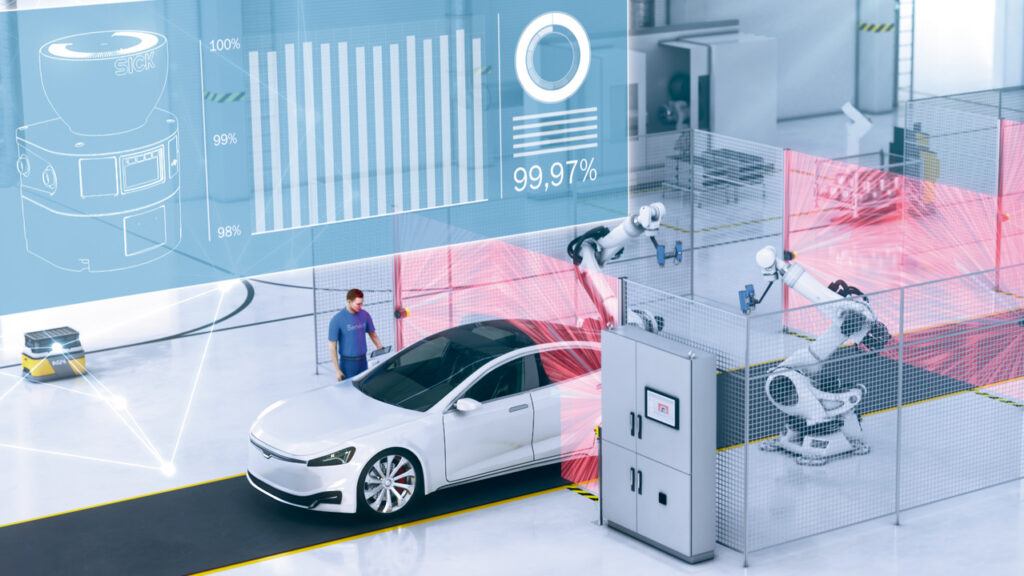
Safety laser scanners are indispensable in modern industrial settings, offering a versatile and reliable solution for safeguarding workers and machinery. These devices detect the presence of individuals and halt machinery or hazards to prevent injuries. They are particularly beneficial in situations where traditional safety measures, like physical barriers or light curtains, are impractical or ineffective.
When selecting a safety laser scanner, several critical features need to be considered to ensure optimal performance and integration.

Machinery Integration
The first consideration is the different network options. They all have different advantages, so it’s important to understand what works best for your application. The good news is that SICK has safety laser scanners for all network options.
- Ethernet/IP: Provides high-speed communication and easy integration with existing industrial networks. It allows for real-time data exchange and remote monitoring.
- PROFINET: Offers robust and reliable communication, especially in complex automation environments. It supports high data transfer rates and seamless integration with other PROFINET devices.
- EtherCAT: Known for its high-speed performance and synchronization capabilities, making it ideal for applications requiring precise timing.
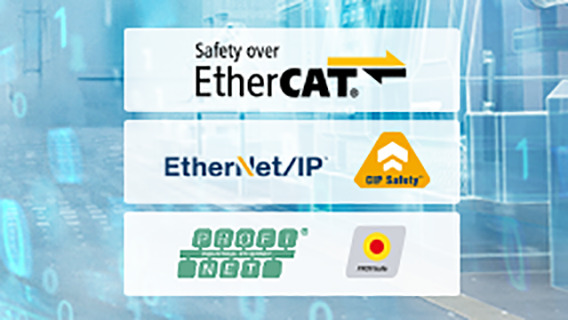
There are also considerations for different I/O communication types.
- Digital I/O: Simple and cost-effective, digital I/O allows for straightforward integration with existing control systems. It provides reliable on/off signals for basic safety functions.
- Analog I/O: Offers more flexibility by providing variable signals that can be used for more complex safety functions and monitoring.
- Safety I/O: Specifically designed for safety applications, these inputs and outputs ensure that safety signals are processed with the highest priority and reliability.
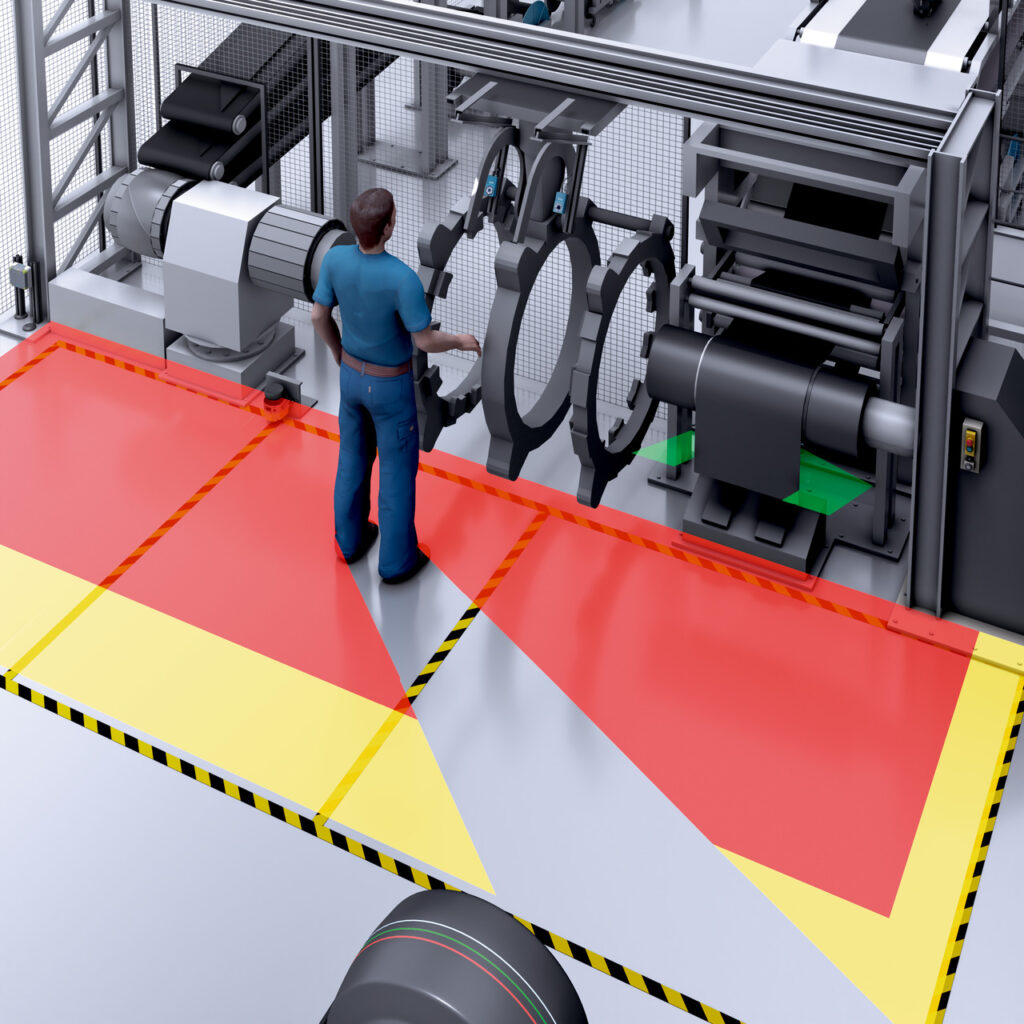
Field Switching Needs
Field switching allows safety laser scanners to adapt to different operational scenarios by changing the monitored area dynamically. This feature is crucial for applications where the environment or operational conditions change frequently.
Multiple Field Sets give you the ability to configure and switch between multiple field sets enables the scanner to adapt to different safety zones as needed. These scanners can be programmed to have multiple protection zones, including primary protection zones and warning zones. This allows for flexible and customizable safety setups.
Automatic Field Switching can be integrated based on the detected environment, enhancing flexibility and safety. The ability to switch between different field sets dynamically allows the scanner to adapt to changing environments and operational conditions.
Muting functions allow the scanner to temporarily disable safety functions in specific scenarios, such as when a known, non-hazardous object is present.
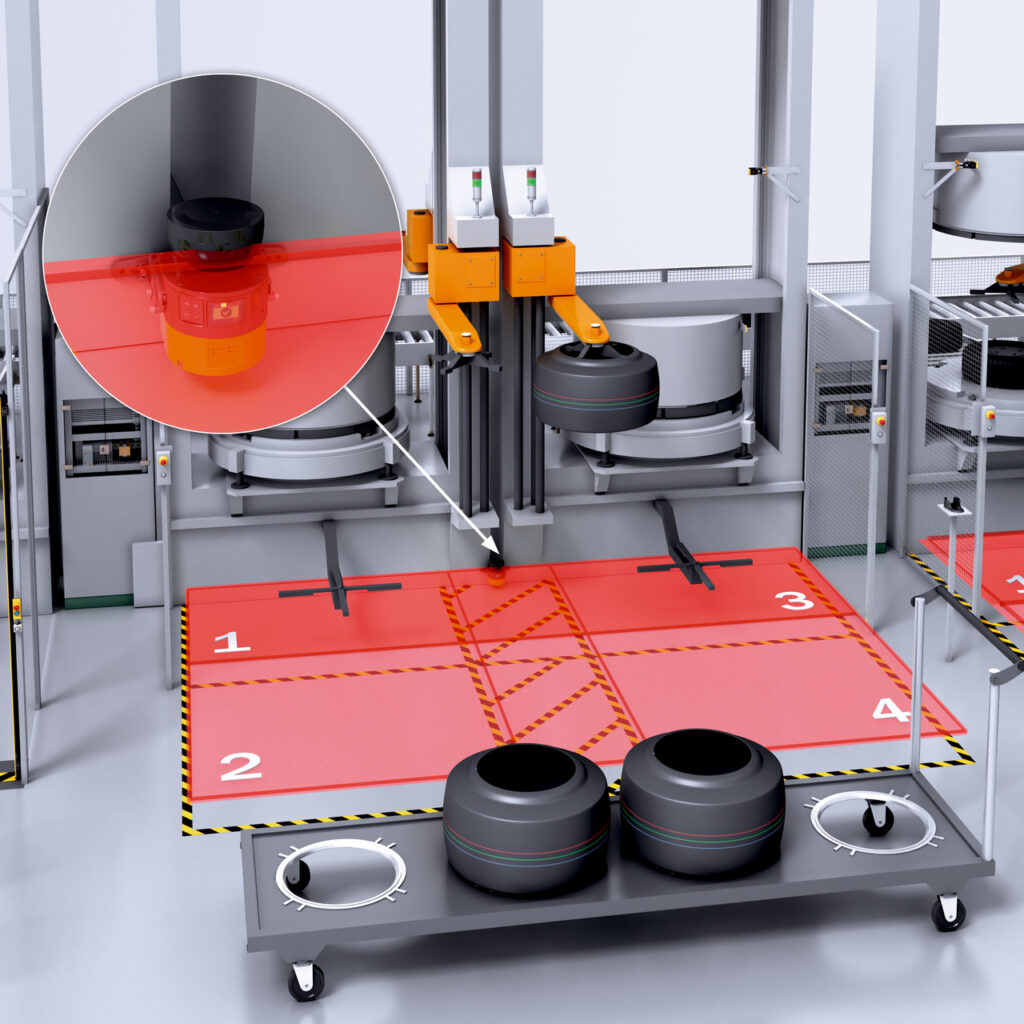
Safety Ranges and Safety Distance Calculations
The safety range of a laser scanner determines the maximum distance at which it can detect objects or people. This range varies based on the model and application requirements. Most safety laser scanners offer ranges from a few meters up to 40 meters, with a wide-angle monitoring area of around 275 to 300 degrees.
Safety Distance Calculations
The ISO 13855 Standard provides guidelines for positioning safeguards with respect to the approach speed of a person. It helps determine the minimum safe distance required to stop machinery before a person can reach the hazard. By carefully considering these features, you can select a safety laser scanner that best meets your specific safety requirements and operational needs.
The safety distance (S) can be calculated using the formula: S=(K×T)+C
where (K) is the approach speed of the person (typically 1600 mm/s), (T) is the total response time of the system, and (C) is an additional distance based on the detection capability of the scanner.
Depending on safety distance requirements, safety laser scanners often come with configurable alarms that can be set to trigger at different levels of intrusion, providing early warnings and immediate responses as needed.
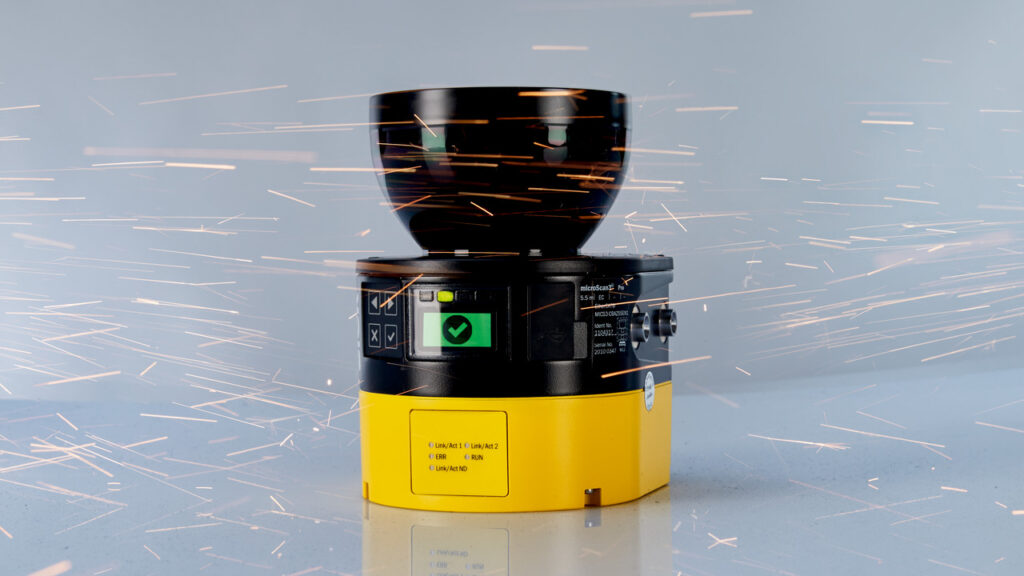
Reliable and Rugged
Thanks to the safeHDDM® scanning technology, the safety laser scanners from SICK are very reliable and ensure safe operation of your application. The scanning technology also allows a large scanning range of up to 9 m while maintaining a compact design. Thanks to the scanning angle of 275°, there are no safety gaps even when the device is mounted in a corner.
The safety laser scanners from SICK are especially resistant to dirt, dust, and ambient light, thus ensuring a high machine availability. Thanks to their high electromagnetic compatibility (EMC), the laser scanners implement safety functions reliably.
The patented safeHDDM® technology has been substantially further developed for theoutdoorScan3, and thus for outdoor applications, with the help of special algorithms. The precise outdoor safeHDDM® scanning technology distinguishes between real safety risks and disruptive environmental influences and works reliably even in demanding weather conditions.

Why Use SICK Safety Laser Scanners?
SICK is synonymous with safety, and their safety laser scanners are renowned for their reliability, versatility, and advanced technology, making them a top choice for enhancing industrial safety. These scanners feature innovative safeHDDM® technology, ensuring high precision and reliability even in challenging conditions like dust, dirt, and ambient light. With a wide scanning range of up to 9 meters and a 275° monitoring area, they provide comprehensive coverage without safety gaps.
SICK scanners are versatile, performing well both indoors and outdoors, and are suitable for various applications, including area protection, access protection, and monitoring hazardous points. They support multiple network options (Ethernet/IP, PROFINET, EtherCAT) and I/O types (digital, analog, safety I/O), allowing seamless integration with existing systems.
Field switching capabilities enable dynamic adaptation to different safety zones, enhancing flexibility and safety. Additionally, SICK scanners are rugged and reliable, resistant to environmental challenges, and offer high EMC compatibility.

The microScan3, nanoScan3, and outdoorScan3 product families set new standards, providing tailored solutions for various applications, and increasing productivity. Choosing SICK safety laser scanners ensures a safer and more efficient industrial environment, leveraging their advanced technology, versatility, and robust performance.
Safety laser scanners are a cornerstone of modern industrial safety, offering unparalleled versatility and reliability in protecting both workers and machinery. By understanding and carefully considering key features such as network and I/O options, field switching capabilities, and safety distance calculations, you can select the most suitable scanner for your specific needs. These devices excel in dynamic environments where traditional safety measures fall short, providing flexible and customizable detection zones that ensure comprehensive coverage and immediate response to potential hazards.





